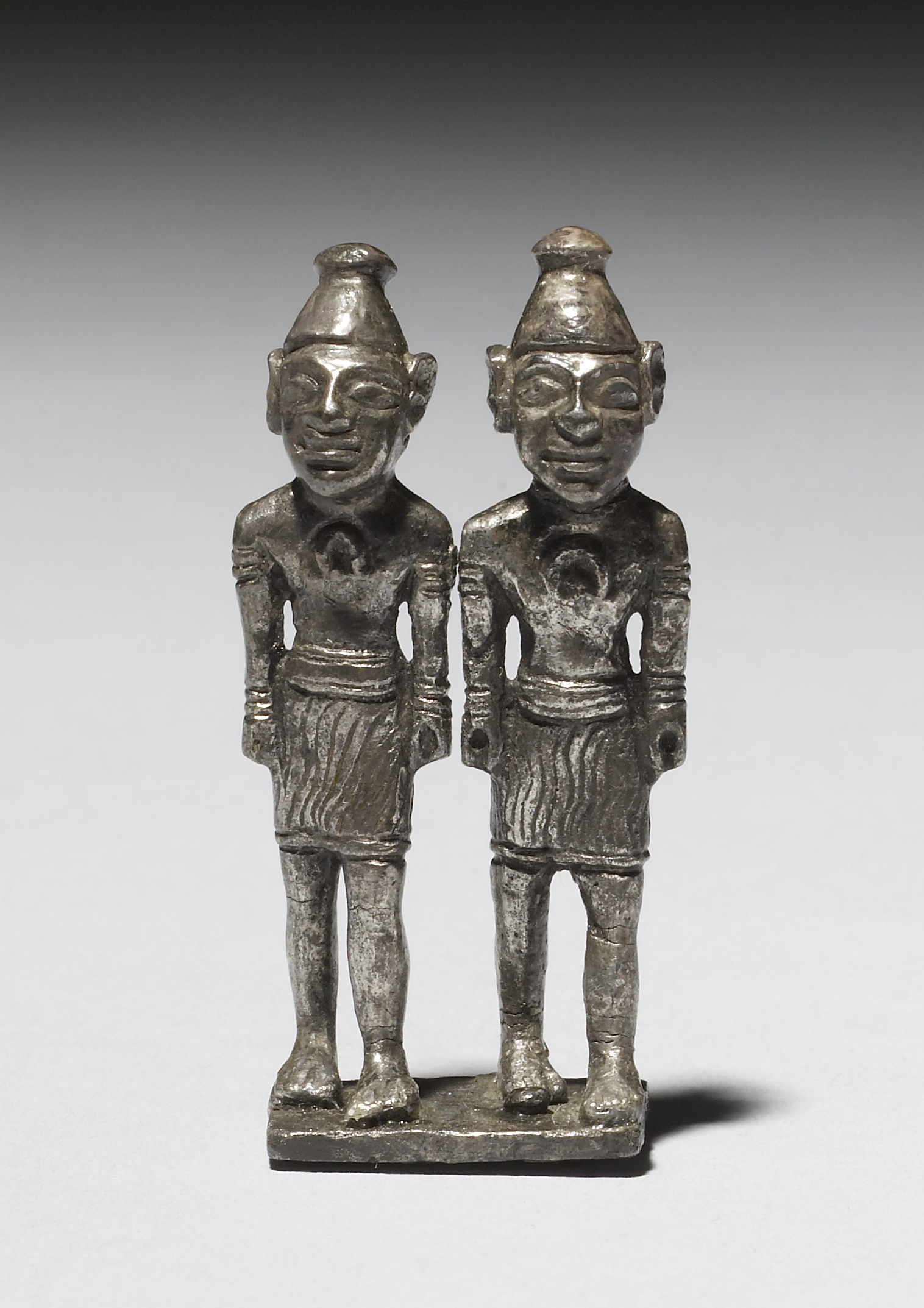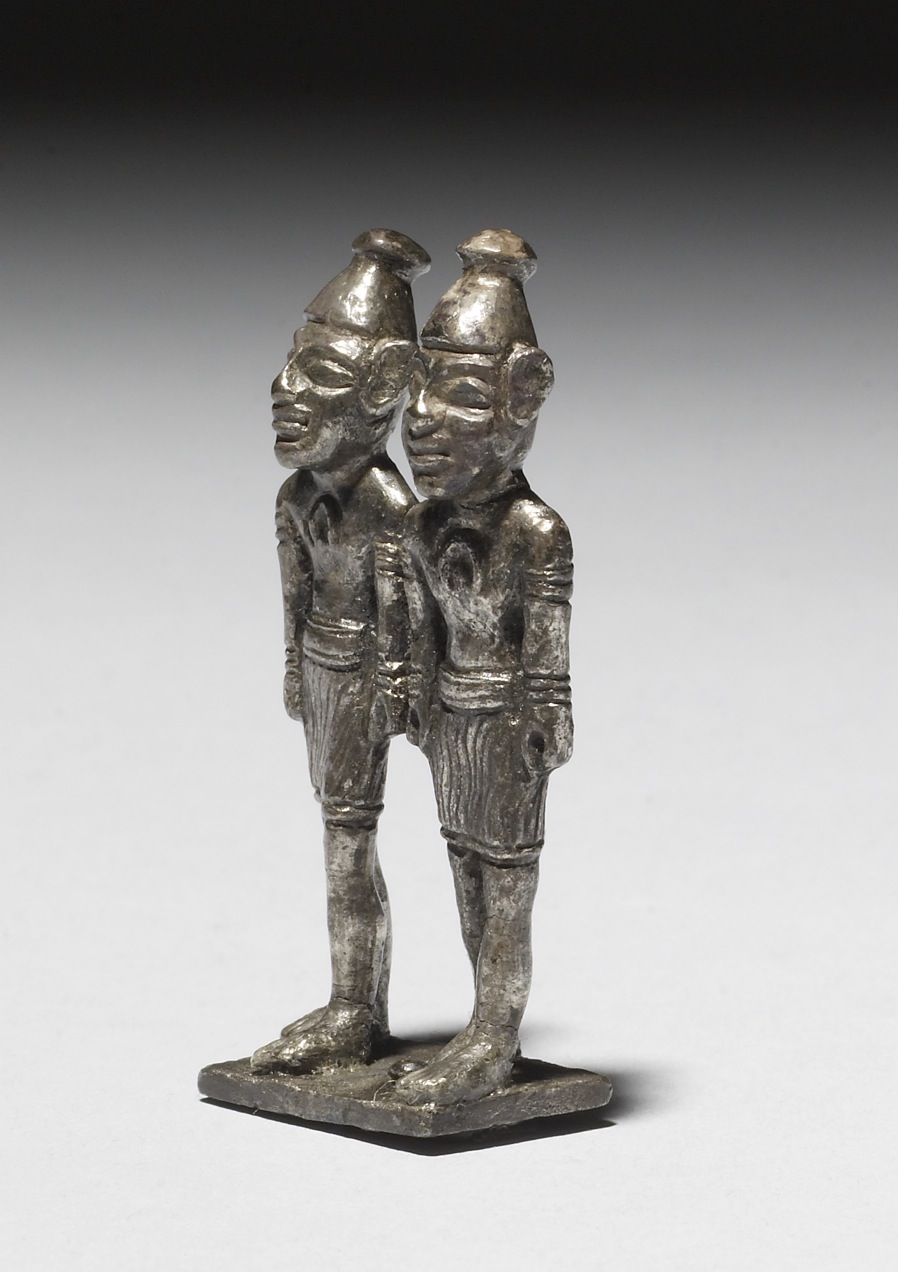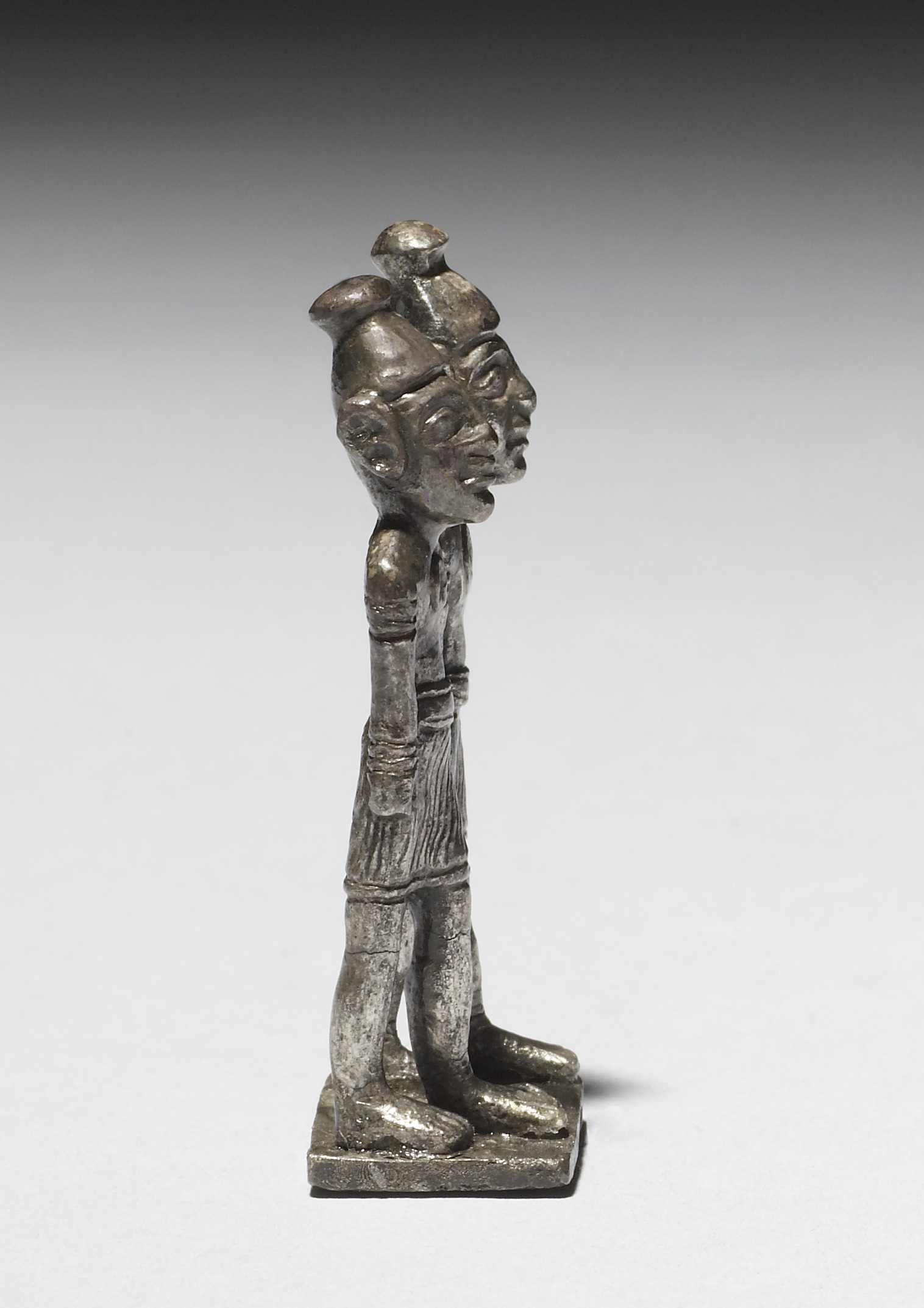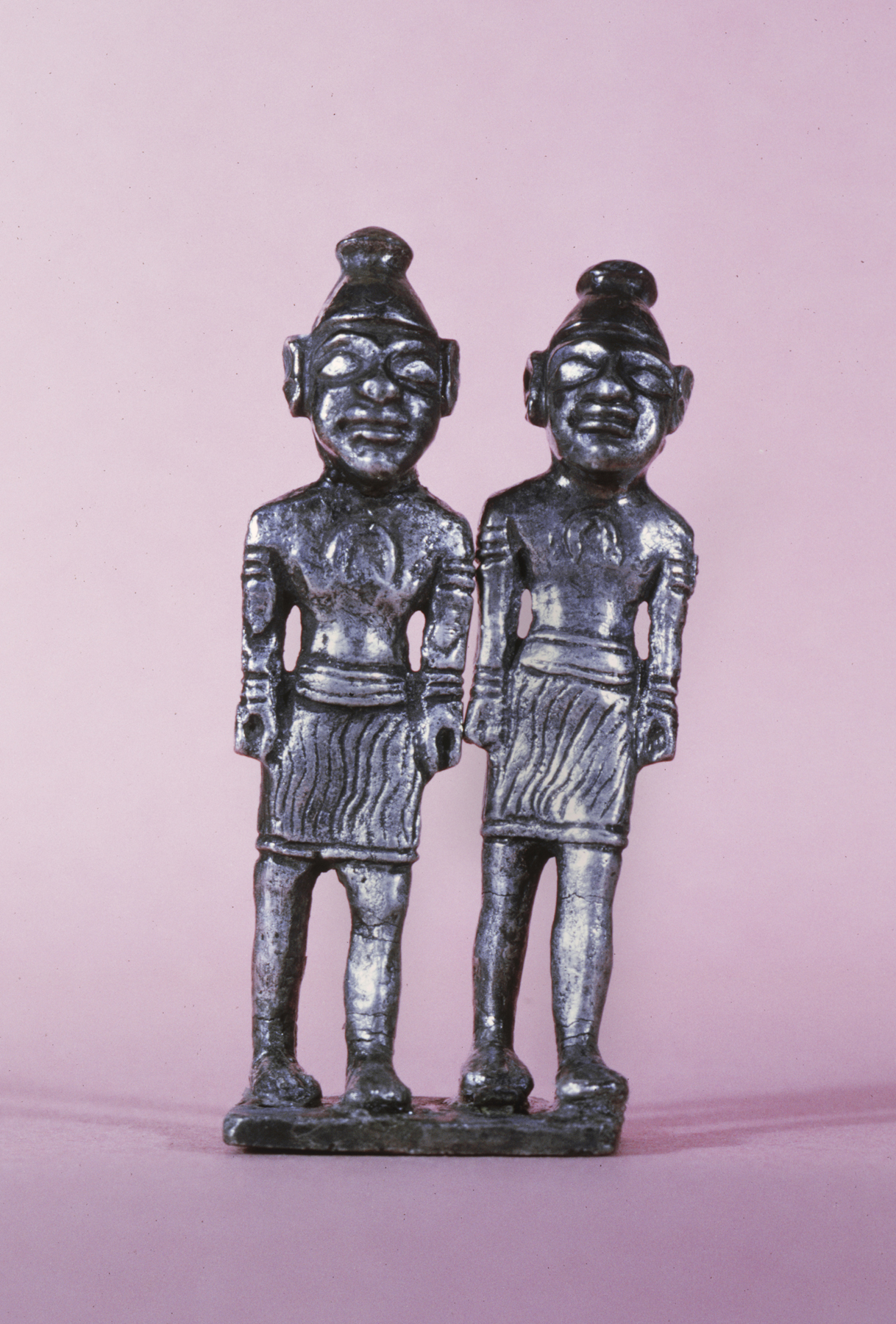Pair of Dieties
(Ancient Near East )
These gods were made separately and soldered together. The squat bodies, large heads and ears, and heavy features are stylistically Hittite, although the headdress and posture have been taken from Syrian examples influenced by Egyptian styles.
Provenance
Provenance (from the French provenir, 'to come from/forth') is the chronology of the ownership, custody, or location of a historical object. Learn more about provenance at the Walters.
Comte Michel Tyszkiewicz Collection, Sale, Hôtel des commissaires priseurs, Paris, 1898, no. 221. Dikran Kelekian, Paris and New York [date and mode of acquisition unknown]; Henry Walters, Baltimore, 1909, by purchase; Walters Art Museum, 1931, by bequest.
Conservation
| Date | Description | Narrative |
|---|---|---|
| Examination | Examined | |
| Treatment | Repaired | |
| Examination | Examined as part of case re-installation. | |
| Treatment | Repaired to reattach figures to base. | |
| 8/1/1972 | Treatment | cleaned; stabilized |
| 8/1/1972 | Treatment | stabilized; other |
| 5/1/1973 | Treatment | cleaned; repaired; other |
| 10/2/1974 | Treatment | cleaned; coated |
Geographies
Turkey, Anatolia (Place of Origin)
Measurements
1 15/16 x 15/16 x 5/8 in. (4.9 x 2.4 x 1.5 cm)
Credit Line
Acquired by Henry Walters, 1909
Location in Museum
Accession Number
In libraries, galleries, museums, and archives, an accession number is a unique identifier assigned to each object in the collection.
In libraries, galleries, museums, and archives, an accession number is a unique identifier assigned to each object in the collection.
57.971










